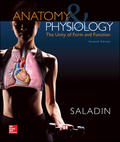
Concept explainers
Introduction:
Muscles are a bundle or package of fibrous tissues of the human body. It helps in locomotion and contraction of the body. It helps in maintaining the internal and external parts of the body in its respective positions. It controls the body passages and openings. It helps in heat production, which is important for the enzyme functioning for the
Answer to Problem 1TYR
Correct answer:
Buccinator is a muscle that is a prime mover in spitting out the mouthful of liquid. Therefore, option b is correct.
Explanation of Solution
Justify reason for the correct statement:
Buccinator is a muscle that is present in the cheek. It is involved in multiple functions like blowing, sucking, and chewing. It compresses the cheek toward the gums and teeth. It expels liquid and air. If the cheek is inflated with water or air, the buccinators get compressed and blow the liquid or air out.
Option (b) is given as “buccinator”.
The buccinator muscle is involved in the movement of cheeks.
Hence, option (b) is correct.
Justify reasons for the incorrect statements:
Option (a) is given as “platysma”.
It is a thin muscle that is present superficially on the lower face and upper chest. It aids in the wide opening of the mouth. Hence, it is a wrong answer.
Option (c) is given as “risorius”.
It is a muscle involved in facial expression. Hence, it is a wrong answer.
Option (d) is given as “masseter”.
It is one of the four pairs of muscles that are involved in the chewing and biting movements of the mandible. Hence, it is a wrong answer.
Option (e) is given as, “palatoglossus”.
It is a tongue muscle. It involves in the elevation of the tongue root and closure of the oral cavity from the pharynx. Hence, it is a wrong answer.
Hence, options (a), (c), (d), and (e) are incorrect.
Buccinator is a muscle of cheek that is involved in blowing, sucking, and chewing process.
Want to see more full solutions like this?
Chapter 10 Solutions
EBK ANATOMY & PHYSIOLOGY: THE UNITY OF
- In a small summary write down:arrow_forwardNot part of a graded assignment, from a past midtermarrow_forwardNoggin mutation: The mouse, one of the phenotypic consequences of Noggin mutationis mispatterning of the spinal cord, in the posterior region of the mouse embryo, suchthat in the hindlimb region the more ventral fates are lost, and the dorsal Pax3 domain isexpanded. (this experiment is not in the lectures).a. Hypothesis for why: What would be your hypothesis for why the ventral fatesare lost and dorsal fates expanded? Include in your answer the words notochord,BMP, SHH and either (or both of) surface ectoderm or lateral plate mesodermarrow_forward
 Human Anatomy & Physiology (11th Edition)BiologyISBN:9780134580999Author:Elaine N. Marieb, Katja N. HoehnPublisher:PEARSON
Human Anatomy & Physiology (11th Edition)BiologyISBN:9780134580999Author:Elaine N. Marieb, Katja N. HoehnPublisher:PEARSON Biology 2eBiologyISBN:9781947172517Author:Matthew Douglas, Jung Choi, Mary Ann ClarkPublisher:OpenStax
Biology 2eBiologyISBN:9781947172517Author:Matthew Douglas, Jung Choi, Mary Ann ClarkPublisher:OpenStax Anatomy & PhysiologyBiologyISBN:9781259398629Author:McKinley, Michael P., O'loughlin, Valerie Dean, Bidle, Theresa StouterPublisher:Mcgraw Hill Education,
Anatomy & PhysiologyBiologyISBN:9781259398629Author:McKinley, Michael P., O'loughlin, Valerie Dean, Bidle, Theresa StouterPublisher:Mcgraw Hill Education, Molecular Biology of the Cell (Sixth Edition)BiologyISBN:9780815344322Author:Bruce Alberts, Alexander D. Johnson, Julian Lewis, David Morgan, Martin Raff, Keith Roberts, Peter WalterPublisher:W. W. Norton & Company
Molecular Biology of the Cell (Sixth Edition)BiologyISBN:9780815344322Author:Bruce Alberts, Alexander D. Johnson, Julian Lewis, David Morgan, Martin Raff, Keith Roberts, Peter WalterPublisher:W. W. Norton & Company Laboratory Manual For Human Anatomy & PhysiologyBiologyISBN:9781260159363Author:Martin, Terry R., Prentice-craver, CynthiaPublisher:McGraw-Hill Publishing Co.
Laboratory Manual For Human Anatomy & PhysiologyBiologyISBN:9781260159363Author:Martin, Terry R., Prentice-craver, CynthiaPublisher:McGraw-Hill Publishing Co. Inquiry Into Life (16th Edition)BiologyISBN:9781260231700Author:Sylvia S. Mader, Michael WindelspechtPublisher:McGraw Hill Education
Inquiry Into Life (16th Edition)BiologyISBN:9781260231700Author:Sylvia S. Mader, Michael WindelspechtPublisher:McGraw Hill Education





